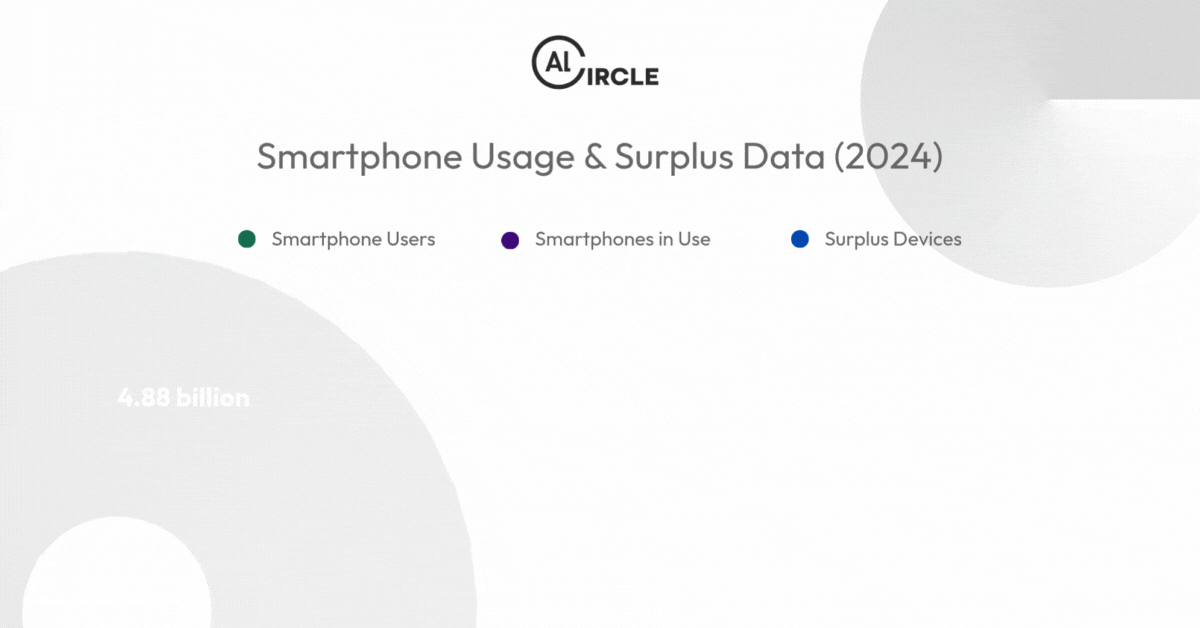How many smartphones do you use? I have two; one for regular days, and another just for travel because its battery lasts longer.
Now multiply that habit by billions.

According to the Global Aluminium Outlook 2025 by AL Circle, as of 2024, the world has 4.88 billion smartphone users, a number that already feels colossal. But the real shock lies in the devices themselves: there are 7.21 billion smartphones in use today.
That’s 2.33 billion more phones than people using them.
At first glance, this looks like a success story. More access, more connectivity, more progress. But it isn’t. It’s a warning sign, a clear indicator of overproduction, overconsumption, and an environmental cost we’re failing to count.
More phones than consumers and what it really means
The surplus points to a familiar modern reality, people owning multiple phones, one for work, one for personal use, and often a drawer full of outdated models that still technically work.
Some of these phones are in second-hand circulation. Others sit idle, waiting for a purpose. But nearly all of them represent raw materials already extracted, emissions already generated, and waste already in motion.
This isn’t just a question of consumer choice. It’s the byproduct of an industry built on short life cycles, incremental upgrades, and a race to the next model, every single year.
The hidden threat: Scope 3 emissions and e-Waste
The real environmental burden lies in Scope 3 emissions, those indirect emissions from upstream and downstream activities like mining, manufacturing, distribution, and disposal. For smartphones, Scope 3 is the biggest slice of the carbon pie and the least controlled.
The electricity used to charge and operate these smartphones (especially when aggregated across billions of devices) contributes to Scope 2 emissions for companies that provide charging infrastructure or operate data centers supporting smartphone use.
However, for most manufacturers, the majority of emissions from device use by consumers are counted as Scope 3.
Every additional phone manufactured and sold, whether it replaces a broken one or just satisfies an upgrade cycle, deepens this footprint.
Then comes the e-waste crisis. Smartphones are packed with valuable but environmentally sensitive materials, including aluminium, lithium, and rare earth elements. But millions of devices end up in landfills or languish in drawers, their recyclable potential wasted.
The sustainability challenge at the core, literally
At the heart of this consumption cycle is a metal that has quietly become the structural standard for smartphones: Aluminium.
Lightweight, durable, and thermally efficient, aluminium is used in casings and frames for majority of flagship phones on the market; from Apple to Samsung to Google. But it comes at a cost.
Primary aluminium production is extremely energy-intensive, emitting large volumes of greenhouse gases and relying heavily on carbon-based electricity in many regions. Even with its recyclability, the industry still leans heavily on extraction and that’s where the emissions pile up.
Bridging the gap: What industry must do
- Maximise recycled content across all components, not just the casing.
- Design for longevity and repair, breaking the upgrade-every-two-years cycle.
- Scale circular supply chains that recover and reuse key metals.
- Invest in renewable-powered production to lower Scope 2 emissions.
- Advance aluminum recycling tech to make it cheaper, cleaner, and more scalable.
- Ensure ethical sourcing across the value chain, especially in high-risk regions.
- Offer robust take-back and refurbishment programmes to close the loop.
The role of the consumer
Consumers hold power. With every purchase, upgrade, or trade-in decision, we shape demand. As a consumer, I’ve started reflecting on my own habits. Yes, I own two phones but going forward, I’m committing to better choices because habits, like mine, aren’t rare. They’re normal. And they need to change. Here’s how:
- Use your smartphone longer. Keep it running, update it, and repair when needed.
- Choose brands with real sustainability credentials, not just flashy marketing.
- Recycle responsibly. Don’t toss old phones; return them through official programmes.
- Buy refurbished. It’s not only cheaper, it’s cleaner.
- Avoid impulse accessories. Opt for eco-friendly alternatives with stronger LCA performance and longer durability.
How the industry is starting to respond
There are encouraging signs of change. Major manufacturers are beginning to invest in more sustainable materials and processes:
Recycled aluminium: Apple, Google, and Samsung use recycled aluminum in their phone casings, a move that significantly reduces energy usage and emissions.
Circular battery supply chains: Samsung is recovering cobalt and aluminium from old devices and production waste, cutting demand for freshly mined materials.
Design for recycling: The Galaxy S25 integrates eight recycled materials and was recently awarded the 2025 Design for Recycling® Award.
Factory decarbonisation: Samsung’s shift to renewable energy in its production facilities is helping reduce Scope 2 emissions, the emissions from purchased power.
Modular, Repairable Phones: Fairphone leads in modular design, while Samsung is improving repairability in select models with longer-lasting designs to push back against the throwaway mindset.
These are all meaningful steps but the industry must go further, and faster.
The smartphone industry is undeniably making progress. But progress is not parity. The gap between users and devices is more than a market quirk; it’s a mirror held up to our habits, and a signal to recalibrate.
Aluminium may be a modern marvel, but it’s also a test of how responsibly we innovate. Whether the industry can meet that challenge and whether consumers demand it, will determine if smartphones remain tools of connection or symbols of excess.
Every smartphone we buy or don’t buy, is a statement about the kind of future we want. Let’s make it a sustainable one.














